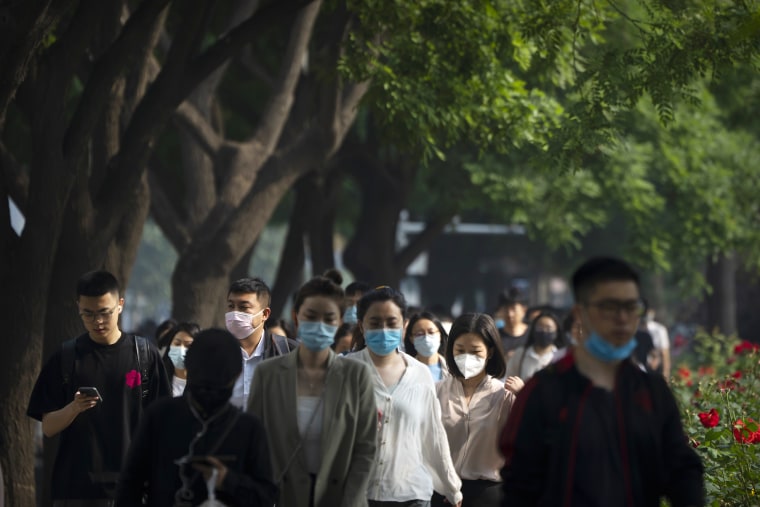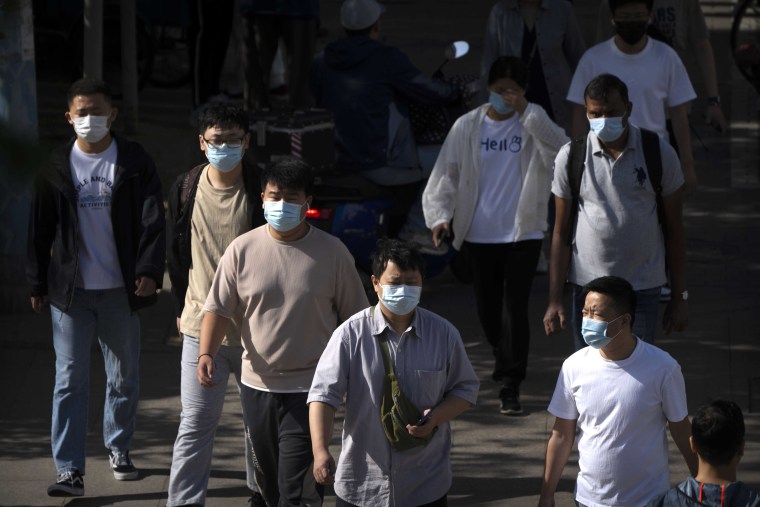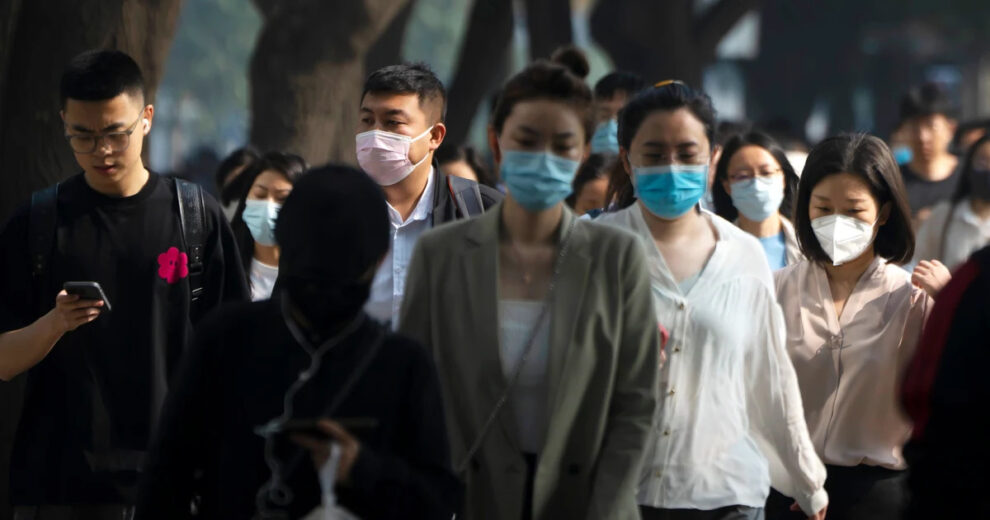BEIJING — China is bracing for a new wave of Covid infections that could see as many as 65 million cases per week by the time the surge peaks at the end of June.
It’s a startling prediction in a country, where the pandemic originated in late 2019, that only months ago had enforced some of the harshest Covid control protocols on the planet. Now, with the latest omicron variant, XBB, fueling a resurgence in cases, the response from China’s government and the public is muted at best.
The surge comes about six months after the country dismantled its sprawling infrastructure for dealing with Covid, including harsh lockdowns, mass testing, stifling quarantines and strict mask requirements.
“People feel differently about this wave,” said Qi Zhang, 30, who works at a finance company in the northern city of Tianjin. “The last time, everyone was terrified, but now they don’t think it’s a big deal,” she told NBC News on Thursday.

The new wave’s data was revealed by respiratory disease specialist Zhong Nanshan at a medical conference this week in the southern city of Guangzhou. According to state media, he told the audience that the wave that started in late April was “anticipated,” and that his modeling suggested China could be approaching 40 million infections per week. By the end of June, he said, the weekly number of infections will peak at 65 million.
The United States, by comparison, was reporting more than 5 million cases a week at its peak last January. Like the U.S., China stopped providing weekly case updates this month, making it difficult to know the true extent of the current outbreak.
The State Department said the U.S., which imposed a testing requirement on travelers from China in January before lifting it in March, was discussing China’s second Covid wave with allies and partners but declined to say whether travel restrictions were under consideration. Spokesperson Matt Miller said the department would monitor the situation in conjunction with the Centers for Disease Control and Prevention before updating travel guidelines.
“We don’t want to see people anywhere, obviously, suffering from Covid-19,” Miller said Wednesday. The U.S. government remains committed to working with China “on transnational challenges, including on global health matters and maintaining open lines of communication,” he added.
Various versions of the omicron subvariants, including XBB 1.5, XBB.1.16, also known as “Arcturus,” and XBB.1.9.1, have been circulating in the U.S. since December and make up nearly all of the current infections in the country. Although the CDC isn’t regularly tracking new cases and the majority of new infections are likely going uncounted, hospitalizations and deaths are continuing to decline in the U.S.
Experts suggest the U.S. already has a strong level of immunity against the highly transmissible form of the virus.
During China’s first omicron wave in December and January, a different omicron variant was infecting millions of people every day, overwhelming hospitals and crematoriums in cities across the country. Store shelves were emptied of fever medications and schools were shut down.
About 80% of China’s 1.4 billion people were infected during that wave, Wu Zunyou, chief epidemiologist at the Chinese Center for Disease Control and Prevention, said in January. But immunity may have waned in the months since, raising the risk of reinfection.
Zhong said at the medical conference that the government had given preliminary approval to two vaccines aimed at the XBB subvariants and that others could be approved soon.

Though China’s current wave will not equal the “tsunami” of cases it experienced in December and January, older people and those with underlying diseases are still relatively under-vaccinated and are at high risk for developing severe disease, said Jin Dong-yan, a virologist at the University of Hong Kong.
“But the number is smaller and so the good thing is that the hospitals then can take care of them in a better way,” he said.
Joey Wang, 24, a student in Hebei province, said many people were finding Covid symptoms less severe this time around. But public fears also seem to have been eased by the change in government messaging.
“No more media coming out trying to terrify the public, no more ‘fight the pandemic’ type of short videos to alert people, and no more hardcore measures like the lockdown,” he said.
The Chinese government’s subdued response comes as it is trying to revive the economy and reassure U.S. and other foreign businesses, which would react negatively to the return of restrictions.
“Covid-zero enforcement was very interruptive to business,” said Michael Hart, president of the American Chamber of Commerce in China, “and so we said again and again to the Chinese government, what companies need is stability, clarity, so they can plan.”
Zhang, the finance employee, said colleagues who recently tested positive were choosing to come to work anyway, contrasting it with the first wave when everyone spent long periods working from home.
“When I look back to such strict Covid measures, it feels like a dream,” she said. “It makes me doubt if all those strict lockdowns were right if we ended up here anyway.”
Source : NBCNews















